“Biz kendileri için ve daha iyi bir dünya için yaratıcı Changemakers olmaya çocuklara öğretmek için tüm eğitim sistemlerini istiyorum.” – emer Beamer
Bir hızla değişen dünyada çözmek için büyük sorunlara çok var. Çocuklar büyük sorunlara kendi fikirler geliyor seviyorum. Bu nasıl yaratıcılık ve tutku hem ilgili öğrenme kanalize edilebilir ve gezegeni iyileştirmek onlar miras kalacak?
Emer Beamer girin. Onun Başlatma için itici güç, Designathon İşleri, tasarım “iş” diye Sahraaltı Afrika'da ve Asya ülkelerinde bir dizi dezavantajlı gençlerle yaptığını edildi. Time and time again she noticed that young people wanted to be change agents for their world. Designathon yöntemi Tasarım Düşünce ve Maker Eğitim yönlerini birleştiren. Both these learning approaches are gaining ground in education systems around the world. Bugün, Designathon has chapters located in the Netherlands, Dubai, Güney Afrika, Aruba, Kanada, Hindistan, Hırvatistan, Sırbistan, Polonya, and Spain, plus an annual event hosted by over 25 cities around the world.
Eğitim Global Arama is pleased to welcome Emer Beamer, the founder of Designathon Works, to talk about how her model is innovating learning.
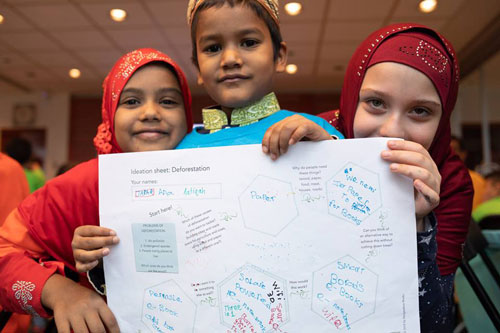
“Our unique value proposition for learners lies in the combination of these three pillars: Yaratıcı düşünce, technological literacy, and being invited to apply themselves to global issues.” – emer Beamer
Emer, how would you describe the unique value proposition you offer your learners?
Our unique value proposition for learners lies in the combination of these three pillars: Yaratıcı düşünce, technological literacy, and being invited to apply themselves to global issues. To explain, many programs for children presume to offer them small and relatively inconsequential issues to tackle, such as where a street light should be placed. In a design-athon, ancak, children get to work on issues such as plastic soup, İklim değişikliği, and refugee problems. The size of the issues is highly motivating and also corresponds to the level of concern children experience. They want to think big.
Tell us a story that illustrates HOW the program works – the goals and the challenges?
During the Global Children’s Designathon, the children learned about deforestation through an interactive themed presentation followed by a discussion. In order to have the highest impact on future endeavors, the children are urged to tackle the causes of deforestation rather than the consequences. The causes for cutting down trees are (1) malzemeler (wood & paper), (2) to make space for cities and roads, ve (3) to use land for agriculture, specifically cows. After exploring the topic as a group, the children split into teams to ideate using the ideation worksheet which helps them channel their ideas, exchange with each other, and step-for-step agree on an idea to help solve the problem. As they work, biz, as facilitators, check in to see if they need help. A few teams then share their ideas with the whole group to clarify their concepts and inspire the others. The next step is to make a functional drawing of their idea. The children then visualize their idea and explain with words and arrows how it will work.
After this step, another few teams share their sketch and idea with the whole group for more feedback. It’s almost time to start making now, but first, we are going to exchange via Skype with a group of children in South Africa. They are working on the same theme so we can find out what they have come up with.
A few of the ideas so far include:
The Mazingira App is designed by children to raise awareness amongst children about the effects of climate change. It helps them acquire enough information, kaynaklar, and knowledge necessary for protecting the environment.
The planting organization device (POD) is a rolling robot fit to detect deforestation and find fertile ground to immediately plant a tree as a replacement.
The making part of the project is the longest and the best according to most children. There are a great variety of materials to work with to create your idea, from recycled materials and clay to a whole Maker Kit with a motor, a light, propellers, and switches, so you can make the prototype really work.
There is never enough time to finish the prototype as well as we want. But the time is up, and the parents and experts are here for you to present to. Each team gets two minutes to present their idea and what they made. The experts ask questions.
Every child gets a certificate of participation. The government representative chooses three projects which will be presented to the local government to see if they can take this idea a step further. The photographer takes pictures of all the children, the facilitators, and the experts. The children run to their parents to celebrate.
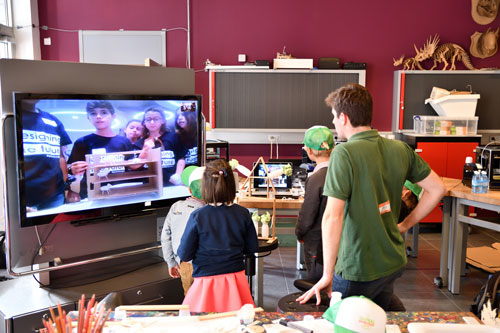
“In a design-athon, children get to work on issues such as plastic soup, İklim değişikliği, and refugee problems.” – emer Beamer
It sounds inspiring! What feedback do you get from teachers and kids on your method?
We regularly survey both teachers and children, and the main takeaways we get from children are:
1. We love coming up with our own ideas for big problems.
2. Working together in a team is fun.
3. We love making with electronics.
This is irrespective of gender. The age group we target is 6-12 yıl.
Here are a couple of quotes from the children from our last global event:
“I learned to respect nature and to have a positive influence to save the world.” – GCD 2018 participant in Tunis, Tunisia
“If there were more Designathons around the world, we could save forests.” – Ilyas, 10, Montreal
68% of the children felt that the Global Children Designathon had a large positive impact on their creativity.
From the teachers, we hear nearly every time that they didn’t expect the children to be so creative and engaged.
In informal interviews and general feedback during and after the workshops, we discovered that most adults were surprised by the way children were able to tackle the problems. Comments like “surprisingly creative” veya “the way they think is really unexpected” are examples.
This lack of expectation shows us that adults don’t realize that children have the potential to produce some of the ideas. Unwittingly, we suspect that these low expectations conspire against the possibilities for cultivating creativity and agency in children.
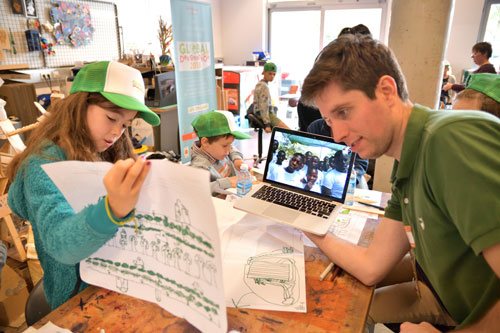
“From the teachers, we hear nearly every time that they didn’t expect the children to be so creative and engaged.” – emer Beamer
How involved are your learners in shaping your curriculum?
We have a series of themes which all follow the same design thinking and maker education approach; we call them a design-athon project. The themes the projects work on are linked to the sustainable development goals (SDGs). When we are choosing the themes, we check in with a group of children who have worked with us over the years, then we draft them in order to test it with at least two different groups of children. We also gather input on the themes from the global hosts of the event in countries around the world. Örneğin, last year’s theme was Deforestation (part of SDG 15 Life on Land), so we gathered input from teachers on how that issue was perceived in their country to provide further information on the theme.
Daha da önemlisi, with a design-athon project, the children always get to decide themselves which aspect of the theme they want to focus on. In this way they contextualize it for themselves and make it relevant. Örneğin, one theme we offer is ‘Mobility,’ which is all about getting from A to B. Relevant problems can include the individual’s inability to move around freely, regardless of age or income. Ancak, it also relates to the environment. Do we have sustainable forms of transport? When we do this theme in Amsterdam, children often choose to focus on C02 or air quality in relation to car pollution. Veya, they may want to tackle traffic jams which stress their parents. In Nairobi, children chose to tackle the problem of drunken drivers causing crashes and Matatu drivers who race on the roads. Each team of three children choose their own perspective, thus ensuring that the problem they work on is one they consider to be an important problem worth solving.
Where do you see Designathon Works going in the next five years?
If we look at the life cycle of social innovation, we find ourselves after four years to have gone through two main stages: exploring the problem mentioned above and designing a solution. Then we spent another two years validating our business and impact models. We have made quite some progress towards replicating and scaling our methodology to schools and cities globally. Aynı zamanda, we are not yet satisfied that the approaches we have for scaling are the best ones. Böylece, we plan to spend another year on two tracks: one is to validate the methodology and it’s learning impacts, and the other is to revisit and fine-tune our methods to achieve system change. We are looking into having an endgame of open sourcing our method wherein we become a knowledge hub and collaborate with governments as they adopt new learning practices. Eninde sonunda, we want all education systems to teach children to become creative changemakers for themselves and for a better world.
C. M. Rubin and Emer Beamer
Sir Michael Barber dahil bana katılın ve dünyaca ünlü düşünce liderleri (İngiltere), Dr. Michael Blok (ABD), Dr. Leon Botstein (ABD), Profesör Clay Christensen (ABD), Dr. Linda Darling-Hammond (ABD), Dr. MadhavChavan (Hindistan), Charles Fadel (ABD), Profesör Michael Fullan (Kanada), Profesör Howard Gardner (ABD), Profesör Andy Hargreaves (ABD), Profesör Yvonne Hellman (Hollanda), Profesör Kristin Helstad (Norveç), Jean Hendrickson (ABD), Profesör Rose Hipkins (Yeni Zelanda), Profesör Cornelia Hoogland (Kanada), Sayın Jeff Johnson (Kanada), Bayan. Chantal Kaufmann (Belçika), Dr. EijaKauppinen (Finlandiya), Devlet Bakanı TapioKosunen (Finlandiya), Profesör Dominique Lafontaine (Belçika), Profesör Hugh Lauder (İngiltere), Rab Ken Macdonald (İngiltere), Profesör Geoff Masters (Avustralya), Profesör Barry McGaw (Avustralya), Shiv Nadar (Hindistan), Profesör R. Natarajon (Hindistan), Dr. PAK NG (Singapur), Dr. Denise Pope (ABD), Sridhar Rajagopalan (Hindistan), Dr. Diane Ravitch (ABD), Richard Wilson Riley (ABD), Sir Ken Robinson (İngiltere), Profesör Pasi Sahlberg (Finlandiya), Profesör Manabu Sato (Japonya), Andreas Schleicher (PISA, OECD), Dr. Anthony Seldon (İngiltere), Dr. David Shaffer (ABD), Dr. Kirsten Sürükleyici Are (Norveç), Başbakan Stephen Spahn (ABD), Yves Theze (ABD LyceeFrancais), Profesör Charles Ungerleider (Kanada), Profesör Tony Wagner (ABD), Sir David Watson (İngiltere), Profesör Dylan Wiliam (İngiltere), Dr. Mark Wormald (İngiltere), Profesör Theo WUBBELS (Hollanda), Profesör Michael Young (İngiltere), ve Profesör Minxuan Zhang (Çin) Onlar bütün milletler bugün karşı karşıya büyük resmi eğitim soruları keşfetmek gibi.
Eğitim Toplum Page Global Arama
C. M. Rubin o aldığı için iki çok okunan çevrimiçi serisinin yazarı 2011 Upton Sinclair ödülü, "Küresel Eğitim Arama" ve "Biz nasıl Oku Will?"Üç satan kitapların yazarı da, DahilHarikalar Gerçek Alice, yayıncısıdır CMRubinWorld ve bir Disruptor Vakfı Fellow.
C izleyin. M. Twitter'da Rubin: www.twitter.com/@cmrubinworld

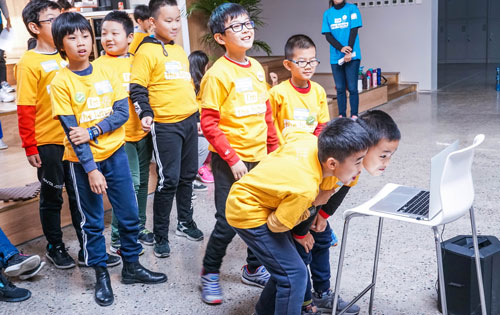

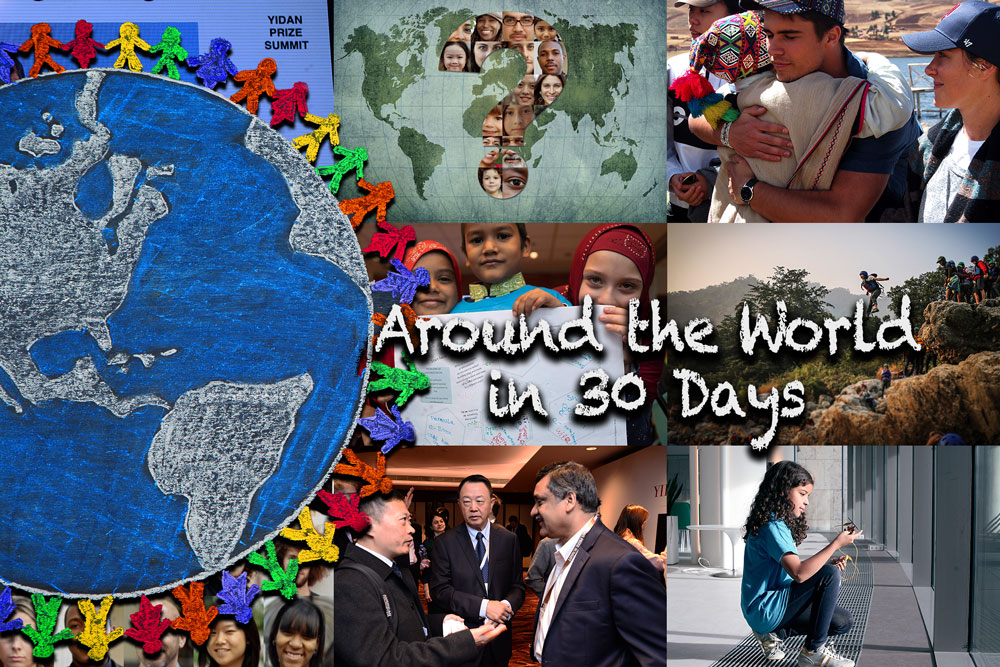

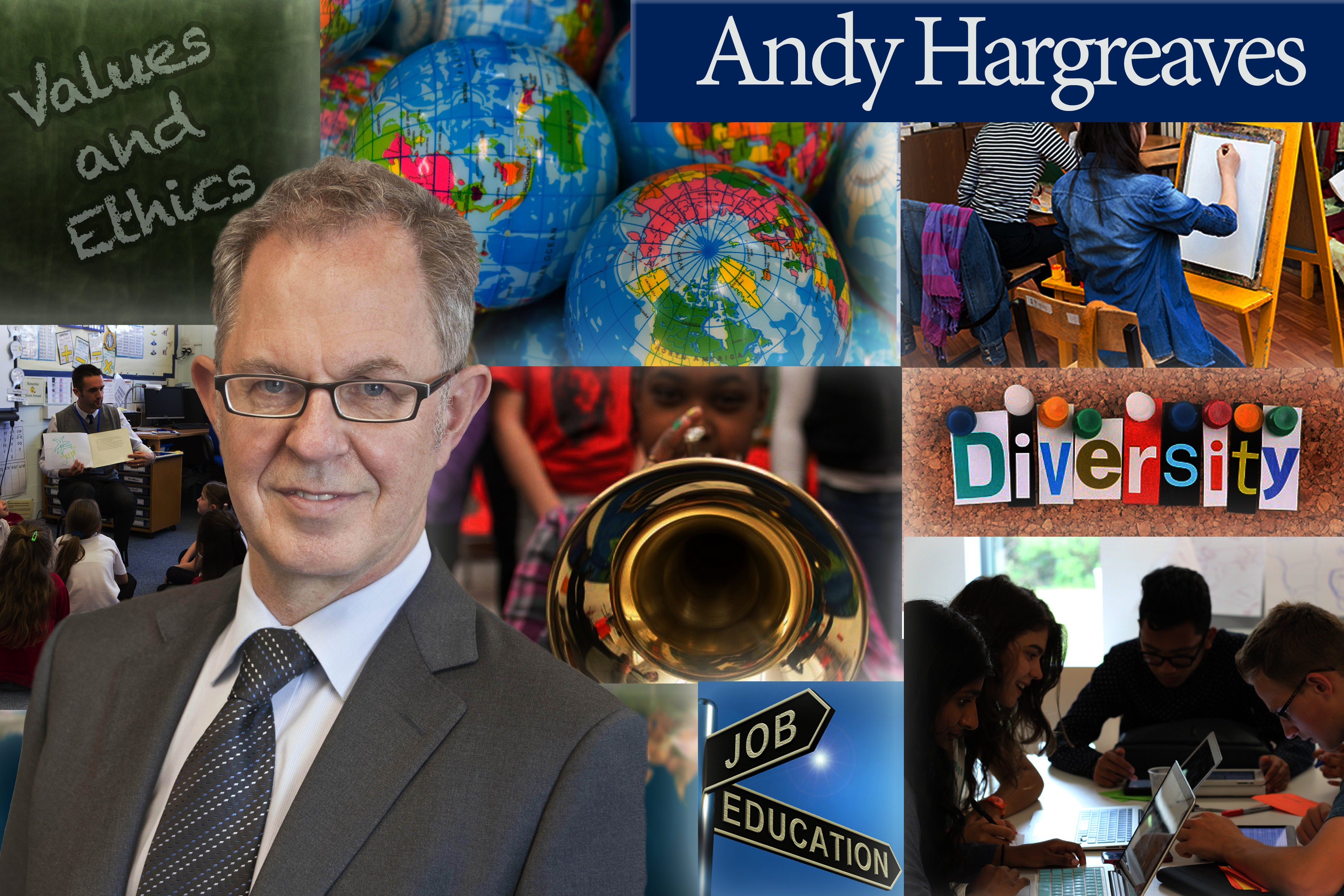
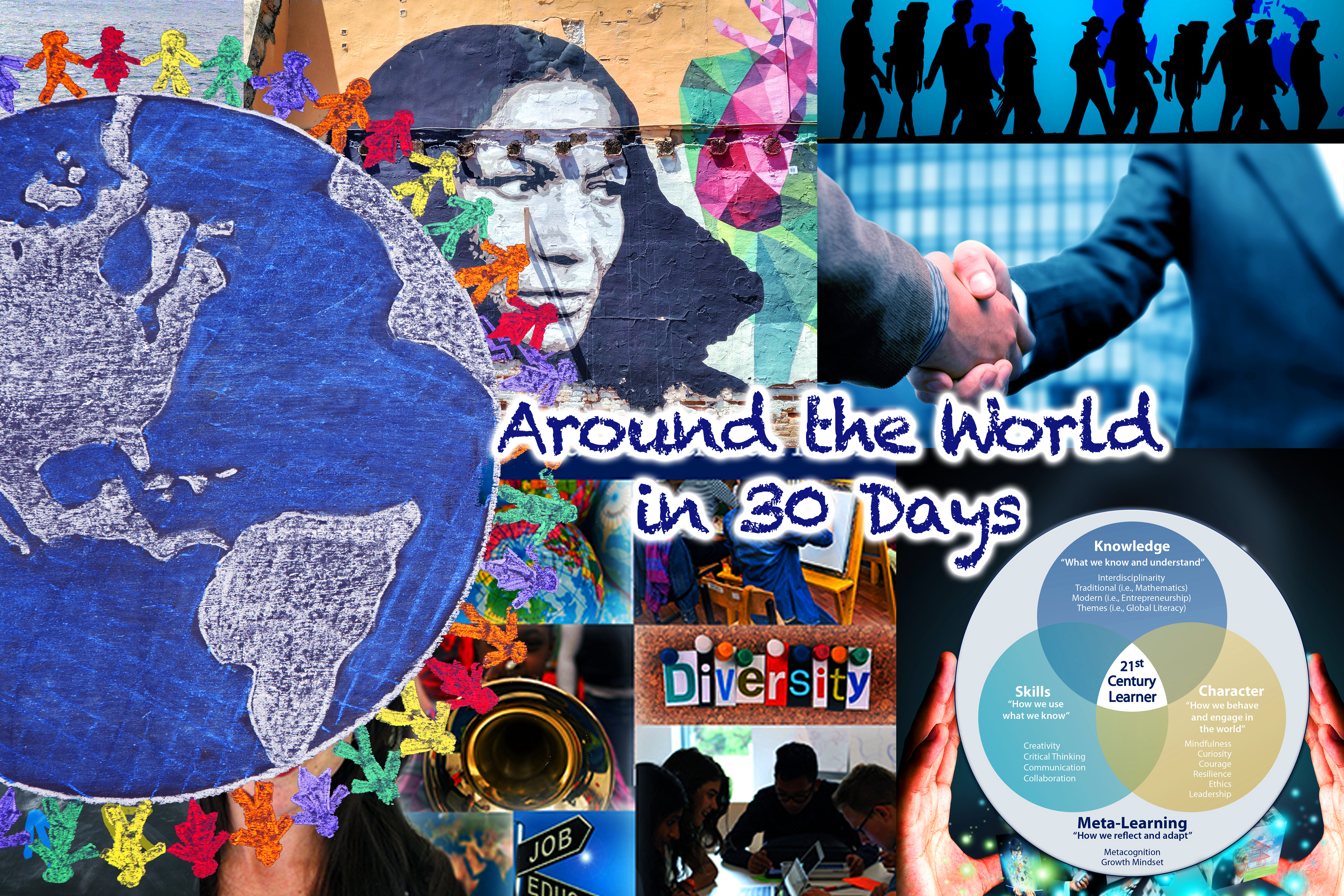
Son Yorumlar